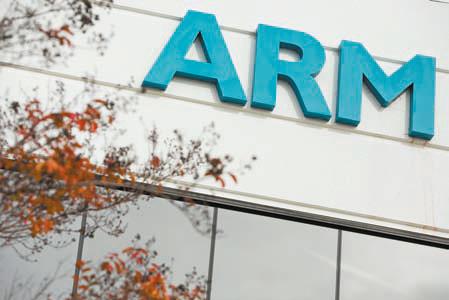ARM Limited (www.arm.com) is the leading provider of embedded microprocessor architecture with commanding market share in everything
Question:
ARM Limited (www.arm.com) is the leading provider of embedded microprocessor architecture with commanding market share in everything from mobile devices to sensors. ARM provides leading microprocessor intellectual property (IP) and supporting technology including physical IP, system IP, graphic processors, design tools and software to a massive ecosystem of partners that in turn develop and support a broad range of industrial and consumer products. ARM licenses and sells its technology and products to international electronics companies, which in turn manufacture, market and sell microprocessors, application-specific integrated circuits (ASICs) and application-specific standard processors (ASSPs) based on ARM’s technology to systems companies for incorporation into a wide variety of end products. The company primarily operates in the UK, the US, Europe, South-east Asia and India. It is headquartered in Cambridge, in the UK.

ARM was established in 1990 as a result of collaboration between Acorn and Apple Computer, to develop a commercial reduced instruction set computing (RISC) processor. VLSI Technology soon became an investor in ARM. In 1991, the company introduced its first embeddable RISC core, the ARM6 solution.
Cirrus Logic and Texas Instruments licensed ARM technology and Nippon Investment and Finance became ARM’s fourth investor and introduced the ARM7 core in 1993.
In 1994, the company experienced international expansion, when Samsung and AKM (Asahi Kasei Microsystems) licensed its technology. In the same year, it opened offices in the US (Los Gatos, California)
and Japan (Tokyo), also introducing the ARM7500 ‘system chip’ for multimedia applications In 2017 ARM had 30 offices around the world, including design centres in China, Taiwan, France, India, Sweden and the US.
What is a microprocessor (‘chip’)?
Microprocessors are found at the heart of many electronic systems. They are semiconductor devices capable of interacting with other components of the system, such as memory, disk drives, keyboards, and so on, either directly or via intermediate devices (‘chip sets’). The processor coordinates the functioning of these devices and manipulates digital data.
Typically, the processor performs various procedures on data stored in the memory or received from peripheral devices, and transfers the results to the appropriate locations. For example, a processor can compress a file by copying data from RAM, carrying out a compression algorithm and then copying the resulting data to a disk drive.
In order to provide this level of ‘intelligence’, a processor executes programs ultimately written by a human programmer. A processor of a given design has a specific instruction set. This is a set of the very logical, arithmetical and other operations that the device can perform in a single step.
In order to execute the program, the processor steps through the sequence of instructions at a rate determined by its clock. This is a device that provides a steady stream of timing pulses at a rate of anywhere between one million and several billion per second.
The power consumption of a processor depends on its clock speed, its power supply voltage and the number of transistors it contains. Because RISC architectures (which ARM uses) can be implemented in silicon with far fewer transistors than CISC architectures (which Intel uses), they tend to consume far less power in operation........
Questions
1. Explain the role of ARM as a supplier in the ‘chip’ value chain.
2. What are the strengths and the weaknesses of ARM’s business model compared with Intel?
3. In which end-user application market should ARM strengthen its relationships to potential partners, and how?
Step by Step Answer:






